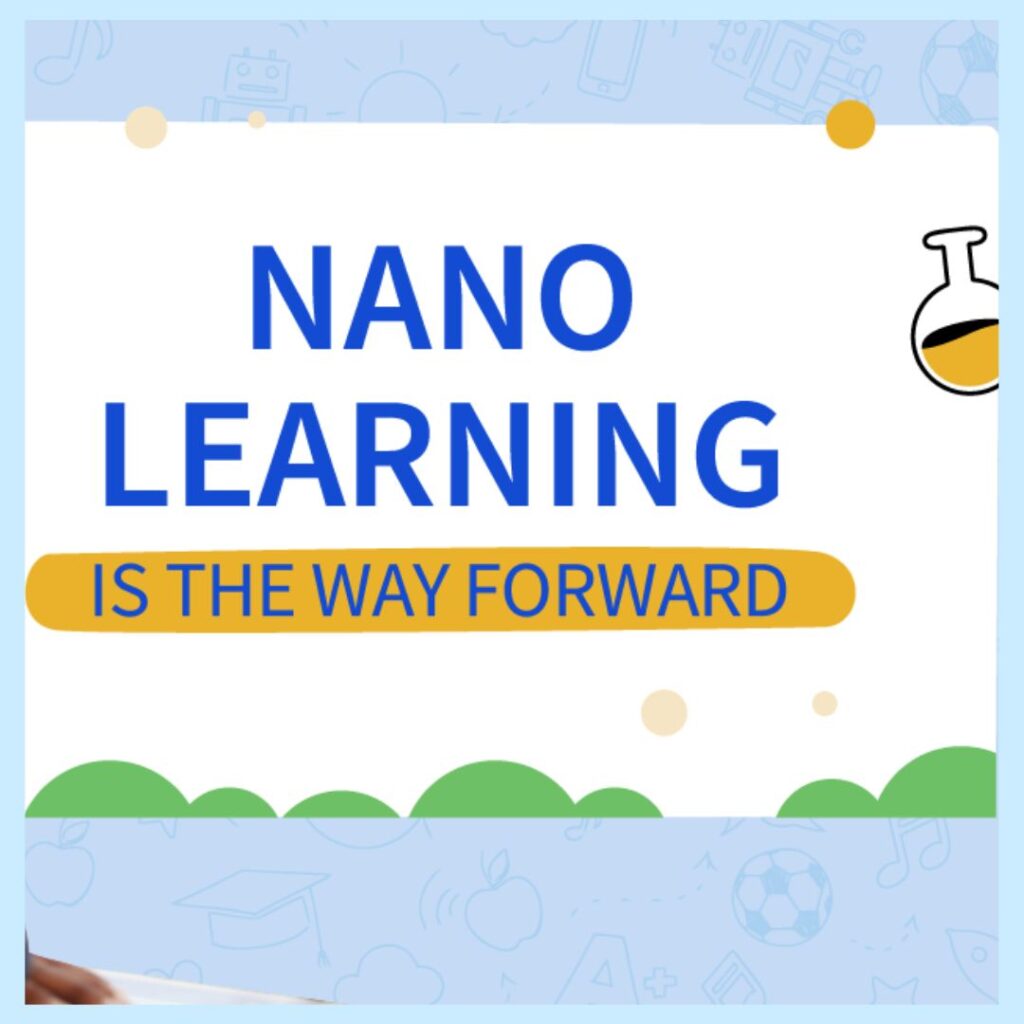In today’s fast-paced world, education is evolving rapidly. Traditional methods of learning are being complemented and, in some cases, replaced by innovative approaches. One such approach is “nano learning.” But what exactly is nano learning, and how can it benefit students? Let’s explore this concept in simple terms.

What is Nano Learning?
Nano learning refers to a method of education where information is delivered in small, easily digestible chunks. Unlike traditional learning, which might involve long lectures or extensive reading, nano learning focuses on brief lessons that are quick to consume. Each “nano” lesson typically lasts just a few minutes, making it perfect for students who are on the go or have short attention spans.
Why Nano Learning is Effective
This bite-sized learning method can prove to be a powerful and efficient tool for mastering new concepts because of the following features:
- Short and Focused: Nano learning lessons are designed to be short, often just 2-5 minutes long. This makes it easier for students to stay focused and retain the information.
- Flexibility: Students can fit this style of education easily into their busy schedules. Whether waiting for the bus or during a break, they can quickly learn something new.
- Retention: Studies have shown that people tend to remember information better when it is delivered in small, focused chunks rather than in long, drawn-out sessions.
- Engagement: This learning technique often uses engaging formats like videos, infographics, or quizzes. These formats are more interactive, making learning fun and less monotonous.
How Nano Learning Works
Nano learning can take many forms. Some of the most common methods include:
- Short Videos: These are quick, informative videos that explain a concept in just a few minutes.
- Infographics: Visual representations of information that make it easier to understand and remember.
- Micro Quizzes: Small quizzes that help reinforce learning by testing knowledge immediately after the lesson.
- Flashcards: Digital or physical cards with brief information on one side and details on the other, perfect for quick revisions.
These methods ensure that the learning process is not overwhelming and that students can easily go over the material multiple times if needed.
Benefits of Nano Learning for Students
This innovative approach to education can enhance students’ learning experience and fit seamlessly into their busy lives. Here’s how:
- Flexible: With this method of learning, students can learn anytime, anywhere. This flexibility is especially beneficial for students with busy schedules or those who prefer to learn at their own pace.
- Customization: This style of education allows students to pick and choose topics that interest them. They can focus on areas where they need more practice, making their study sessions more effective.
- Adaptability: Nano learning can be adapted to suit different learning styles. Whether a student learns best by watching videos, reading text, or taking quizzes, there is a nano learning method that will work for them.
- Less Stress: The bite-sized nature of this learning system reduces the stress that can come with traditional studying. Instead of facing hours of reading or note-taking, students can tackle small bits of information at a time, making learning less daunting.
Challenges of Nano Learning
While this short-form of learning has many advantages, it’s not without its challenges:
- Depth of Learning: Because this method of learning is so brief, it may not be suitable for complex topics that require deep understanding. In such cases, nano learning can be used as a supplementary tool rather than the main method of instruction.
- Distraction: The ease and flexibility of this educational approach might lead to distractions. Since lessons are so short, students might be tempted to skip from one topic to another without fully understanding the material.
- Consistency: To be effective, this form of learning requires consistency. Students must regularly engage with the material to build on their knowledge over time.
How to Implement Nano Learning in Everyday Life
Here are a few practical strategies to seamlessly integrate this micro-learning approach into your daily routine
- Set a Schedule: Dedicate a few minutes each day to nano learning. This could be during a commute, before bed, or whenever you have a few spare minutes.
- Use a Variety of Resources: Combine different nano learning methods like videos, quizzes, and infographics to keep the learning process interesting and comprehensive.
- Focus on One Topic at a Time: To avoid getting overwhelmed, stick to one topic until you feel confident about it before moving on to the next.
- Review Regularly: Repetition is key to retention. Regularly review the material to reinforce what you’ve learned.
Conclusion
Nano learning is an exciting new way for students to absorb information quickly and efficiently. By breaking down complex topics into small, manageable pieces, it makes learning less intimidating and more accessible. While it may not replace traditional learning methods entirely, yet it’s a powerful tool that can complement and enhance the educational experience. By incorporating nano learning into their study routines, students can make the most of their time and stay ahead in today’s fast-paced world.
If you are from Bangalore and wanting to explore the option of enrolling your child in NIOS, connect with us today on +91 6361938556 to seamlessly continue your education journey with open schooling.
Article By: Vidya Singhania
Other useful articles for students:
Gamification in Children’s Education: Role, Benefits, and Drawbacks
Study techniques for board exams: State vs. CBSE, A Comprehensive Guide – 2023
Inspiring Stories of Slow Learners Who Became Famous and Great
